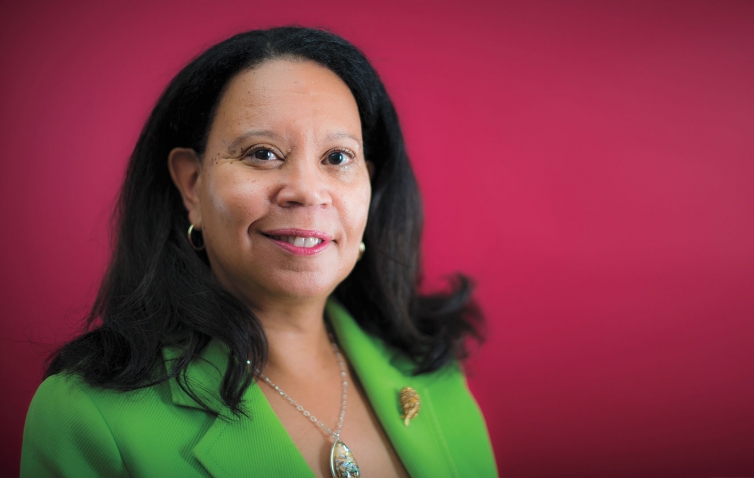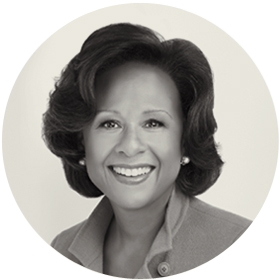Photo by Richard Howard
When Dean of Students Sheilah Shaw Horton looks to the future of Wellesley, she sees students representing different races, gender identities, and geographies who feel confident in their identities. They’re connected to each other. They get enough sleep, they have a handle on their stress, and they can step away from their studies to have a little bit of fun.
Maybe it’s an R.A. who organizes an hour-long Bananagrams break in the Beebe living room, or a physics professor who counsels a first-year distraught about receiving her first C. Maybe residence halls compete in a hydration challenge to remind students how crucial it is to drink enough water. Horton, who’s just completed her first year as dean, is brimming with new ideas for how to enhance student life on campus.
“Students need recognition and acknowledgment,” says Horton, who came to Wellesley last year from Loyola University Maryland in Baltimore. She brought with her more than 25 years’ experience as an administrator and an M.A. and Ph.D. in counseling psychology.
As dean, she heads up the massive Division of Student Life, which includes the Office of the Dean of Students, the class deans, Residential Life and Housing, Religious and Spiritual Life, Intercultural Education, Slater International Center, the Office of Student Involvement, the Pforzheimer Learning and Teaching Center, and disability, health, and counseling services. She’s tasked with making sure students are happy, healthy, and supported. She spent last year on a listening tour on campus. She dined with students, joined them for tea, met campus leaders, and took part in Flower Sunday and other traditions, all with the goal of learning students’ likes and dislikes. She also asked them what they would change about Wellesley.
Academics got a thumbs-up. “Students love their professors,” Horton says. “That was consistent. They revere them and work very hard to please them.” However, when it comes to downtime, students are less enthusiastic. Many say Wellesley’s social life is disappointing. “There’s so much of a focus on academics, that students are just not having fun,” Horton says. “You need to learn and grow, but you also need to have fun.”
With that in mind, she’s set out on a path to infuse more fun into students’ lives, while also focusing on health and wellness and inclusion. She has developed a three-prong approach: “embrace, engage, and empower.” She’s actively working to develop programs to embrace students, supporting their identity development and fostering a sense of belonging; engage them, with social activities and a robust health and wellness program; and empower them, recognizing and strengthening campus leaders.
Recently, the American College Health Association came to campus to help Horton and her team think through a health and wellness approach focused on prevention. “Students know where to go if they’re sick or struggling emotionally,” she says. “That’s not an issue. It’s helping students live a healthy, well lifestyle.” It’s about how to handle stress, how to get enough sleep and exercise. Horton says students need more trusted adults in their lives they can talk to. “We need the faculty to also help students with their personal issues,” she says, “not just academic ones.”
Also key is developing a philosophy around social space. Students chatting in residence hall living rooms are often shushed by others who are reading or studying. “We’re reminding students these are social spaces,” Horton says. “If you want to study, you need to go to the library.”
One concrete change Horton has made is to create the Camellia Student Leadership Awards. The program is named after the Durant camellia on campus, given to Wellesley years ago by the College’s founders. Recipients receive a pink camellia pin. “The program came directly out of me listening to students,” says Horton, who recognized a need to show students their work leading campus groups is appreciated. “The tree demonstrates longevity, strength, beauty, presence,” Horton says. And, she acknowledges, the tree also requires sustenance, plus a nurturing environment in which to grow, much like Wellesley students.







We ask that those who engage in Wellesley magazine's online community act with honesty, integrity, and respect. (Remember the honor code, alums?) We reserve the right to remove comments by impersonators or comments that are not civil and relevant to the subject at hand. By posting here, you are permitting Wellesley magazine to edit and republish your comment in all media. Please remember that all posts are public.